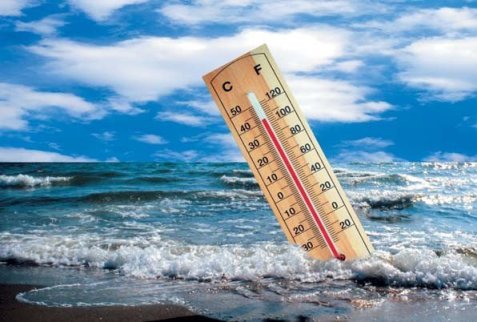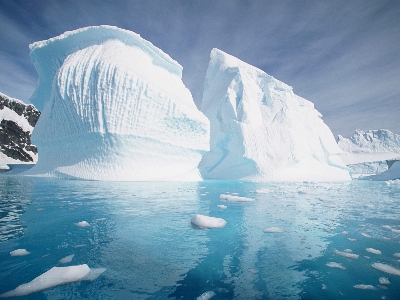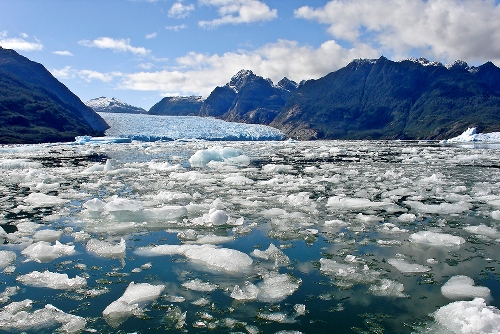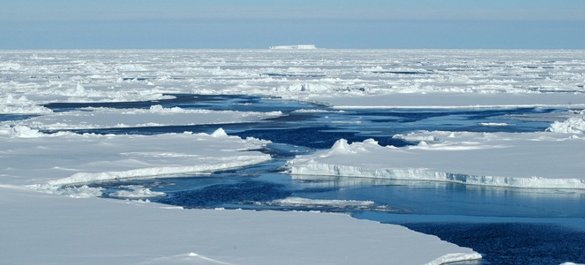The message on the approval of the national action plan for the second stage of adaptation to climate change was published on the website of the Government of the Russian Federation. February 2024 on Earth became the warmest on record. Sea ice on both the top and bottom of the planet continued to decline in 2024.
The Government of the Russian Federation continues to work to adapt the country to global climate change in order to prevent its negative impact on sectors of the economy and the quality of life of people. The message on the approval of the national action plan for the second stage of adaptation to climate change was published on the website of the Government of the Russian Federation. The plan is designed for the period until 2025 and contains 17 activities, which are grouped into federal, sectoral and regional blocks. They provide organizational, legal, scientific, methodological and information support for the necessary adaptation measures.
In particular, the document implies the improvement of the insurance mechanism taking into account the risks of natural disasters, the creation and implementation of new technological solutions aimed at studying climate, the formation of a list of the best Russian and international practices for adapting economic sectors to climate change, annual monitoring and evaluation of the effectiveness of existing adaptation measures.
To develop a climate risk management system, it is planned to compile a list of existing and future data obtained using spacecraft. In addition, it is planned to create a special information resource with climate change scenarios in Russia. This resource will include climate characteristics and different climate scenarios for each region.

Based on it, an assessment of possible economic damage from climate impacts will be carried out and a consolidated list of climate-vulnerable objects will be compiled. Much work remains to be done in the Russian Arctic. There it is planned to monitor the condition and stability of soils within populated areas and production facilities and, based on its results, prepare the necessary proposals in the field of technical regulation.
The national action plan for the first stage of adaptation to climate change until 2022 was approved by the Government in 2019. Within its framework, a national system of adaptation to climate change began to be formed, measures were identified to protect people, economic sectors and natural objects from the negative consequences of climate change, and a set of indicators was formed to achieve the goals of adaptation to climate change.
February on Earth was the warmest on record. Monthly reports from the European Union Climate Change Service Copernicus and the US National Oceanic and Atmospheric Administration (NOAA) confirm an unusual temperature trend that began in mid-2023, the warmest year on record; from that point on, average temperatures exceeded the 1.5-degree target set in the Paris Agreement.
The World Meteorological Organization (WMO) has summed up the final results for February 2024, which was 1.77° warmer than the February average for the period 1850–1900, according to data from the Copernicus Climate Change Service. The average global sea surface temperature for February above 60°S and below 60°N latitude was 21.06°, the highest for any month on record and higher than the previous record of August 2023 (20.98°).

The average daily sea surface temperature by the end of February reached a new absolute maximum of 21.09°. Sea surface temperature is defined over the global extrapolar ocean from 60°S to 60°N and is used as a standard diagnostic for climate monitoring. El Niño in the equatorial Pacific continued to weaken in February 2024, but sea air temperatures generally remained unusually high.
February temperatures were above average across much of the Arctic, North and South America, Africa, Europe and Australia, while much of Greenland, East Asia and parts of Antarctica were cooler than average. North America, South America and Europe had their warmest February on record, while Africa had the second-warmest February, NOAA said in a separate report.
Global sea ice extent is the fourth highest in a 46-year record. Arctic sea ice extent was slightly below average, while Antarctic sea ice extent was well below average (at 958,295 sq km), the second highest on record, according to NOAA.
Sea ice on both the top and bottom of the planet continued to decline in 2024. In the waters around Antarctica, ice cover has dropped to near-historic lows for the third year in a row. The repeated losses hint at a long-term change in conditions in the Southern Ocean, likely caused by global climate change, according to scientists at NASA and the National Snow and Ice Data Center. Meanwhile, the 46-year trend of shrinking and thinning ice in the Arctic Ocean shows no signs of reversing.
“Sea ice acts as a buffer between the ocean and the atmosphere,” said ice researcher Lynette Boisvert of NASA’s Goddard Space Flight Center in Greenbelt, Maryland. “Sea ice prevents much of the exchange of heat and moisture from the relatively warm ocean to the atmosphere above.” Less ice cover allows the ocean to warm the atmosphere over the poles, causing more ice to melt in a vicious cycle of rising temperatures.

Historically, the extent of sea ice surrounding the Antarctic continent has fluctuated widely from year to year, while decadal averages have been relatively stable. However, in recent years, the ice cover around Antarctica has declined sharply.
“In 2016, we saw what some call a regime shift,” said sea ice scientist Walt Meyer of the National Snow and Ice Data Center at the University of Colorado Boulder. “Sea ice cover in Antarctica has decreased and remains generally below normal. We’ve had three record lows in the last seven years.”
Antarctic sea ice reached its lowest annual extent this year on February 20, totaling 768,000 square miles (1.99 million square kilometers). This is 30% below the end-summer average of 1981–2010. The difference in ice cover spans an area the size of Texas. Sea ice extent is defined as the total area of ocean where ice cover is at least 15%.

This year’s minimum is pegged at February 2022, which is the second-largest ice cover around Antarctica and close to 2023’s record low of 691,000 square miles (1.79 million square kilometers). Given the latest ice retreat, this year marks the lowest three-year average of ice cover observed around the Antarctic continent in more than four decades.
The changes were observed in data collected by microwave sensors aboard the Nimbus 7 satellite, jointly operated by NASA and the National Oceanic and Atmospheric Administration (NOAA), as well as satellites of the Defense Meteorological Satellite Program.
Meanwhile, on the other side of the planet, maximum winter ice cover in the Arctic Ocean corresponds to an ongoing 46-year decline. Satellite images show that on March 14, the total area of the Arctic Ocean covered by sea ice reached 6 million square miles (15.65 million square kilometers). That’s 247,000 square miles (640,000 square kilometers) less ice than the average from 1981 to 2010. Since 1979, maximum winter ice cover in the Arctic has shrunk by an area equivalent to the size of Alaska.

This year’s Arctic ice maximum is the 14th lowest on record. Difficult weather conditions make it difficult to predict what will happen in any given year. The reduction in ice makes the Earth more susceptible to solar heating. “Sea ice and the snow on its surface are very reflective,” Boisvert said. “In the summer, if we have more sea ice, it reflects solar radiation and helps keep the planet cool.” On the other hand, the open ocean is darker and easily absorbs solar radiation, trapping and storing that energy and ultimately contributing to the warming of the planet’s oceans and atmosphere.
Sea ice around the poles is more susceptible to weather than a decade ago. Ice thickness measurements from laser altimeters aboard NASA’s ICESat-2 satellite show that less ice remains there during warmer months. This means that each year new ice must be formed from scratch, rather than building up on old ice to form thicker layers. Thinner ice, in turn, is more prone to melting than multi-year accumulations.
“The idea is that in a couple of decades we’ll have virtually ice-free summers,” Boisvert said, as ice cover drops below 400,000 square miles (1 million square kilometers) and much of the Arctic Ocean is exposed to ice cover. warming light of the Sun. It’s too early to tell whether recent declines in sea ice at the South Pole indicate long-term changes rather than statistical fluctuations, but Meyer believes long-term declines are inevitable.




